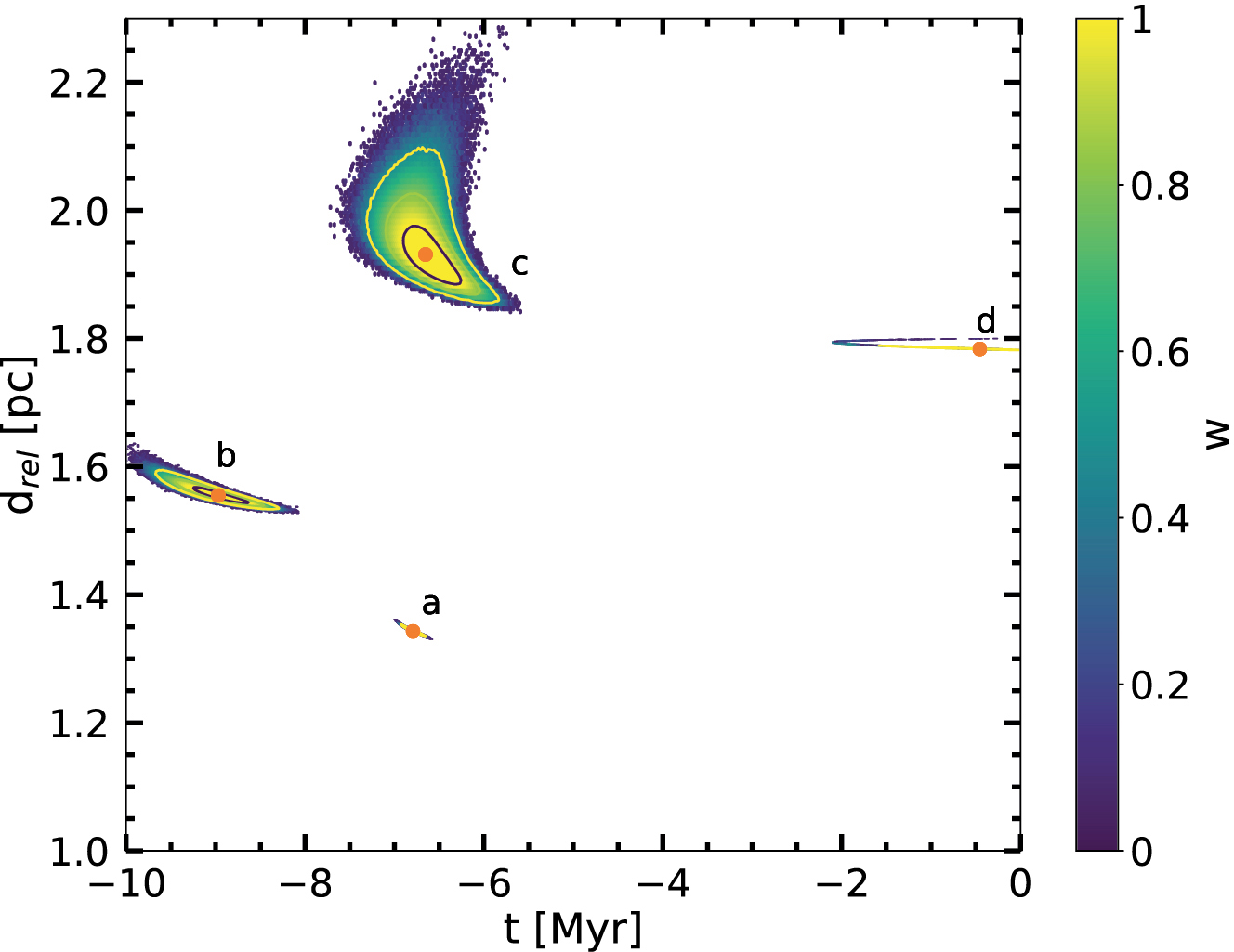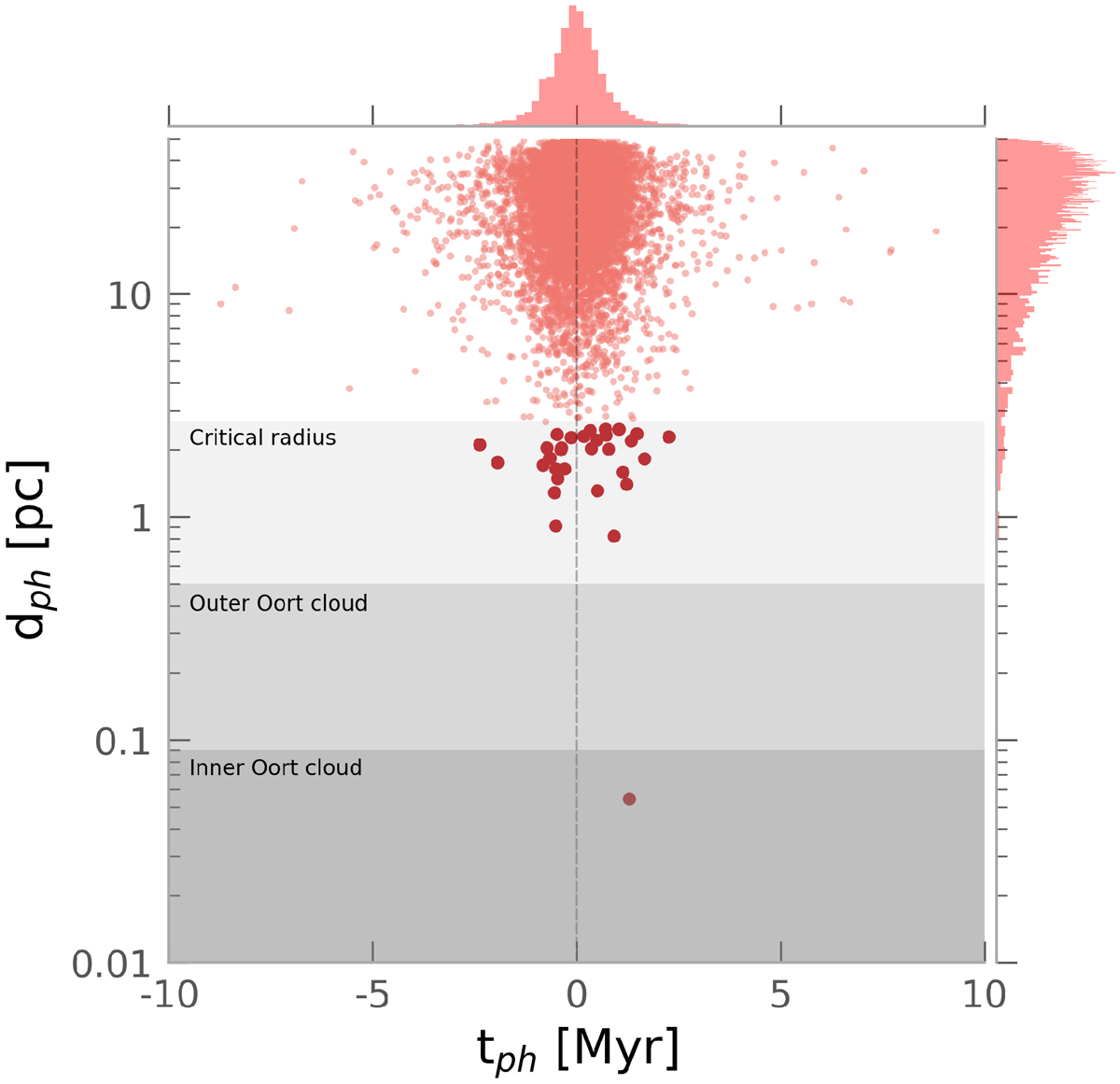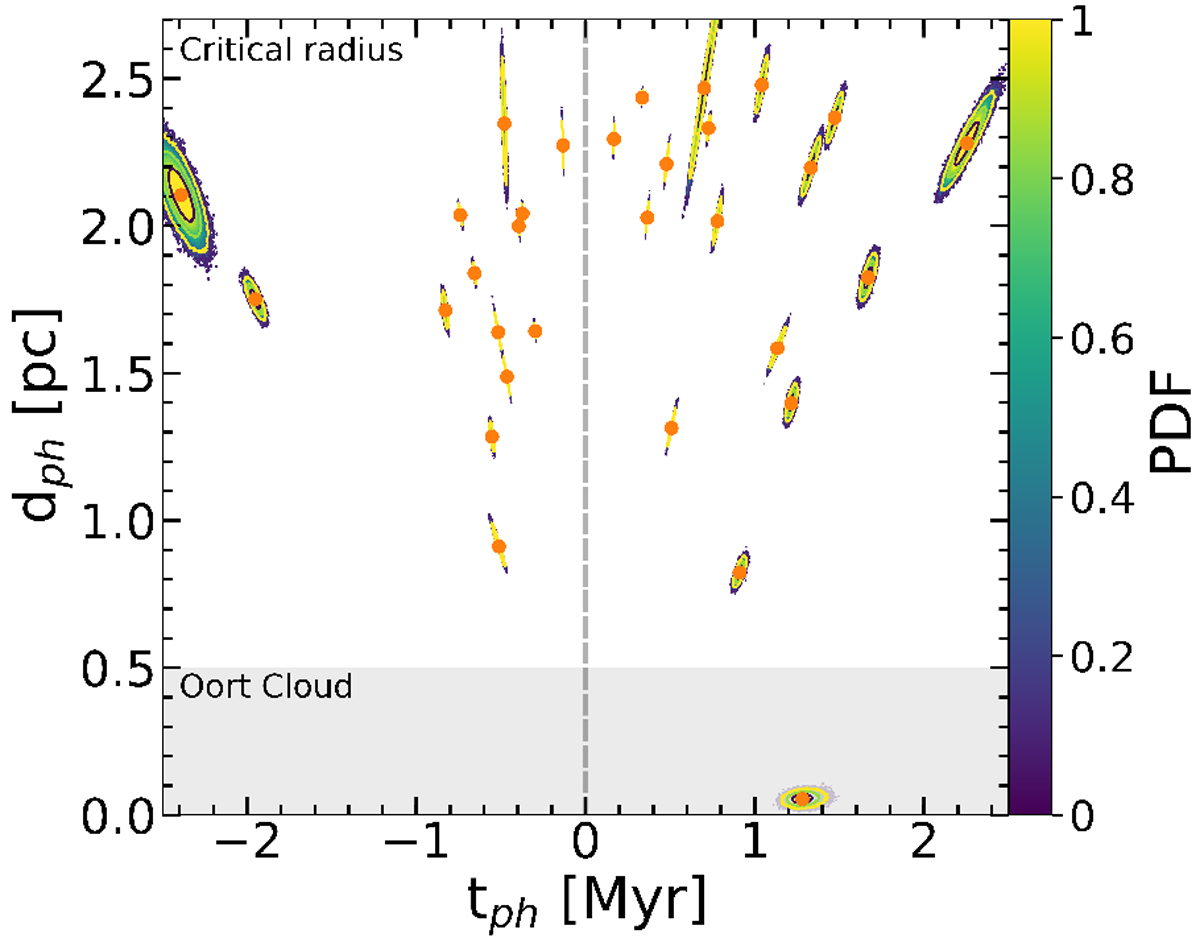Research
Publications
Portegies Zwart-Torres et al., 2018, MNRAS 479 L17-L22
Torres et al., 2019, A&A 629-A139
Torres 2020, Leiden University Press, ISBN:9789402820331
Torres et al., 2023c, in Review.
Interstellar Objects
The recent discoveries of an interstellar object (ISO) in our solar system opened a new era in the understanding of planetary systems and the role of comets as messengers within systems. I studied the origin of the first detected interstellar object 1I/ ’Oumuamua (e.g., Meech et al., 2017, Mamajek 2018) by using observations from the Gaia survey. I built one of the first detailed N-body simulations [Portegies Zwart-Torres et al., 2018] to trace the origin of ’Oumuamua. I found that about 1.3 Myr ago ’Oumuamua must have come so close to the solar-type star HIP 17288 that it most likely was its birth system (see Fig 1). I explored the different formation scenarios for ’Oumuamua and concluded that objects like ’Oumuamua are formed in the debris disc as a leftover from the star and planet formation process and subsequently liberated.
 Fig 1, Probability density distribution in time of closest approach (t) and relative distance (drel) between ‘Oumuamua and its four closest stars. a) Gaia 5108377030337405952 — drel 1.342 pc; b) Gaia 4863923915804133376 — drel 1.554 pc; c) Gaia 5140501942602437632 — drel 1.931 pc; d) Gaia 1362592668307182592 — drel 1.783 pc.
Fig 1, Probability density distribution in time of closest approach (t) and relative distance (drel) between ‘Oumuamua and its four closest stars. a) Gaia 5108377030337405952 — drel 1.342 pc; b) Gaia 4863923915804133376 — drel 1.554 pc; c) Gaia 5140501942602437632 — drel 1.931 pc; d) Gaia 1362592668307182592 — drel 1.783 pc.
Motivated by this discovery, I studied the formation of ISOs in our solar system. First, I constructed the most accurate catalog available at that time of the nearest stars to the Sun. Using data from the Gaia catalog and combing it with detailed N-Body simulations. I calculated the trajectory of the stars that came within 50 pc of the Sun 10 Myr ago and those that are expected to do so in the next 10 Myr (see Fig. 2).

Fig 2. Closest approach distance vs. closest approach time. The shaded areas represent the critical radius within which stars can affect an object in the Oort cloud, and the boundaries of the outer and inner Oort cloud, respectively. The big dots correspond to those stars that pass within 2.5 pc of the Sun. The catalogue of nearby stars can be found here.
I found that the star GJ710 will traverse the Oort cloud in approximately 1.28 Myr at the distance of 0.054 pc (Fig 3), instead of 0.33 pc at 1.38 Myr previously predicted (e.g., Garcia-Sanchez et al. 2001).

Fig 3. Joint probability density of the time and distance of closest approach for those stars that are predicted to pass within 2.5 pc of the Sun (Fig 2). The contour levels indicate regions enclosing 0.6, 0.9, and 0.99% cumulative probability (colour bar). The shape of each PDF is affected by the relative errors in the observational data of each star, particularly the errors on parallax and radial velocity.
The interaction of this star, other nearby stars, and the galactic tidal field are raising the semi-major axis of about 1.1% of the comets of the Oort cloud over a 20 Myr span. Consequently, these comets will become interstellar objects (see Fig. 4).
Fig 4. Orbital evolution of the particles in the simulated Oort cloud. The figure shows the evolution of the eccentricity as a function of the semi-major axis over the period of 20 Myr (±10 Myrs.). The rise of eccentricity and semi-major axis, is due to the nearby stellar encounters and the galactic tidal field. The colour bar represents the integration time.
This means that the solar system is gradually seeding interstellar space with cometary bodies. I extended this study to explore the formation of interstellar objects in the nearest star to the Sun [Torres et al., 2023c]. I found that the mean galactic density of ISOs in the solar neighborhood is ∼ 1014 per cubic parsec, which means that we expect about 2–12 such visitors per year within 1 au from the Sun. This rate represents a lower limit for each star. This strongly suggests that the Sun is connected to the other stars in the Galactic field by an interstellar cloud of objects constantly traveling between planetary systems. In this way, the interstellar comets serve as messengers between planetary systems and live in an Interstellar Oort Cloud.